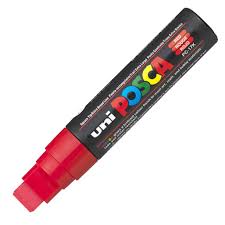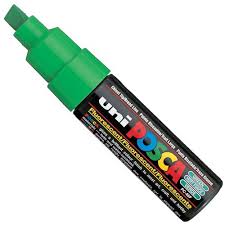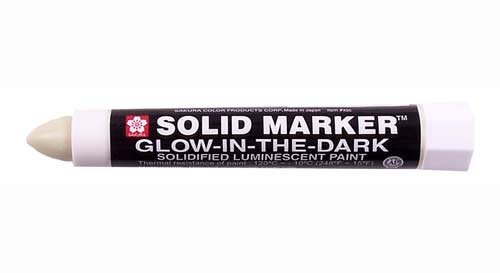 Loading... Please wait...
Loading... Please wait...The Paint Marker Phenomenon Part 1
Posted by PenPal on 3rd Nov 2014
Before I started working in the pen and marker field, I knew nothing about the products. So when I was introduced to the racks of different markers with an array of colors and tip sizes, I was confounded. I couldn't think of any use for them other than painting on posters for football games or touching up a ding in whatever painted surface.
If you're shaking your head, I understand. But, in my defense, I was a writer, a retailer (clothing and shoes), a traffic coordinator and an interior designer. Paint markers didn't really come into play in my business experience. Even when I owned a restoration cleaning business, we used plain old useful black Sharpie to mark boxes.
Well, I poked through the shelves and examined the barrels and tips, noted that some were oil based and some water based, and picked up samples to mark up whatever surface I could find to see what the product would do. I admit I fell immediately in love with the Posca 17K--the bad boy used to mark windshields. It's the one you see as you whiz by an auto dealer where they announce pricing and sales by writing on the glass and parking the cars facing the roadway. My imagination took over, and I could see myself doing great artistic things on walls or large posters or the sides of a van.

Still, the shelves went on and on, and I saw things like the Sakura Solid Low Halogen marker that rang no bells and inspired nothing but frustration. What on earth was low halogen? Well, the term means 'salt former' and compounds containing halogens are called 'salts'. So what's the deal about salt? These salts (like flourine), when compounded to produce plastic, can create an extremely high heat resistance, so things like Teflon(R) limit combustion in a fire. Chlorine, which is in PVC, makes it a low cost, versatile material used in health care, communications, aerospace, automotive, retailing, textiles and construction.

So what's the fuss? In some applications there is a concern that those plastic materials will release corrosive and toxic gases if ignited in a fire. So wherever the smoke travels, it can damage electronics and is potentially hazardous to persons if they cannot easily evacuate from the area. Usually, there is a means of escape, but think of mass transit rail cars, ships, and offshore oil and gas platforms. Yikes! No where to run, nowhere to hide.
So while a marker won't add much toxin to an environment using these products, it is helpful to be able to make marks in areas where high heat is part of a process, and where corrosion and metal fatigue are a concern. So stainless steel apps, petrochemical and refineries, energy and power generation plants, deslainaton plants, transportation infrastructure and aerospace are all good places for a Low Halogen Marker.
If you've ever been in an auto accident, you know the insurance man comes to look over the vehicle. He usually uses a marker to show where all the damages are. And many of our clients in the insurance industry like to use the Uni-Posca 85F because of the fluorescent colors and ease of use. It has a broad chisel tip and shows up on the metal surface so the folks who put your car back together won't miss anything. It's also great for car washes and detailers because it writes on the window so everyone knows the whats next.

How about that Glow-in-the-Dark marker from Sakura? It writes and stays on smooth, rough, wet or damp surfaces. They glow brighter after the same light exposure as their novelty counterparts, but the duration of the glow can be up to 30 minutes, depending on a few factors: intensity of the light source it is exposed to, the distance from the light, the duration of time it is exposed, and the thickness of the mark made. It can be used for safety, aerospace, commercial fishing boats, fire stations, mining, search and rescue, automotive sales, construction sites, highway construction, shipping, warehouses, and safety and directional signage. The stick is 13mm wide and can be trimmed with a knife for smaller marks. Working temperature is 15 F to 248 F. When I see this product, I think it should be included in a First Aid kit in case you are going into places you aren't familiar with. Marking trees seems like a good idea if you're going on an adventure. It probably should be attached to a flash light. They are often used in searches for lost campers.

We have so many more, so next time I will talk about what else is on those shelves. If you need to make a mark, we almost certainly have something you can use.